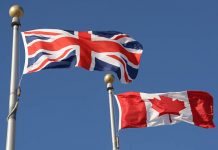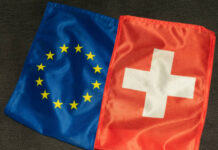Markets
Several Fed central bankers saw confirmation in yesterday’s PCE deflators (headline 0.3% m/m, 2.4% y/y – core 0.4%, 2.8%) that rate cuts would be appropriate later this year. But a bumpy return towards the 2% target and ongoing economic strength mean there’s no urgent need to do so. Narrower inflation gauges including the likes of core services ex housing rising 0.6% m/m underpin such a cautious approach. Cleveland’s Mester said the December dot plot guidance of three cuts “feels about right”. US money markets over the past months have come to adjust accordingly. Such pricing combined with the absence of a topside surprise (similar to the CPI published earlier in February) triggered some short covering, pushing yields at some point as much as 10 bps down. US yields capped the net daily decline to just 1.3-2.6 bps eventually but the sharp intraday swing down delivered a blow to German yields from which they did not recover. They rose about 5 bps after (m/m) HICP data from Germany, France and Spain all suggested still-strong underlying price pressures but closed the day between 1.4-5.1 bps lower in the end. EUR/USD succumbed in late-afternoon European trading. The pair hit an intraday high before sliding more or less in lockstep with US yields bottoming out. EUR/USD finished just north of 1.08, down from 1.0838 at the open. DXY successfully recovered north of 104 again. USD/JPY pared both USD-losses and JPY-gains with the combo leaving an intraday low around 149.2 to finish around 150 before extending gains this morning to 150.4. BoJ governor Ueda poured cold water on those expecting an imminent shift from the central bank. While BoJ member Takata yesterday rekindled such speculation by saying the price target is coming into sight, Ueda sounded less convinced. He needs more confirmation from (wage) data. Chinese PMIs this morning were mixed at best. The (official) non-manufacturing gauge recovered further in expansion territory (51.4) but details are far from flashy. The manufacturing gauge held below 50 for a fifth month straight but contradicts with the private (Caixin) gauge eking out a small gain to 50.9. USD/CNY is revisiting the recent highs at 7.20. This level looks like a red line for the PBOC/Chinese authorities.
Yesterday’s national inflation readings culminate in the European-wide figure today. Having that in mind, surprises to the 0.6% m/m and 2.5% y/Y (2.9% core) should be limited. The US manufacturing ISM has more market moving potential. We see no reason for the recent bottoming out process to have stopped in February. Most regional indicators (New York, Dallas, Philadelphia, Richmond) have improved as well. We do not exclude a reading suggesting expansion again (> 50 from 49.1 and vs 49.5 expected). Renewed activity in this rate-sensitive sector would suggest the US economy has already seen the peak impact from the Fed’s tightening cycle. The bottom below core bond yields, the US in particular, is therefore well protected. If the data further add to the idea of a soft (or no) landing, decent risk sentiment could contain the fall-out for EUR/USD. The leadership reshuffle announced post-market by the troubled commercial real estate lender NYCB over ineffective (loan risk) oversight is a major risk factor though. The spotlights are now back on the slumbering topic. A whole range of Fed speeches are scheduled for today as well.
News & Views
US Congress approved a temporary spending bill to prevent a partial US government shutdown this weekend. US President Biden will now sign off on the agreement which keeps part of the government funded until March 8 and the rest until March 22. The measures buy time to agree on a funding plan for all of fiscal year 2024. Republican house speaker Johnson earlier this week indicated that lawmakers agreed in principle on the substance of half of the 12 full-year bulls. Drafting and reviewing those should be completed by the March 8 deadline while finishing the rest of negotiations is something for the end of March deadline.
South Korean exports rose by 4.8% Y/Y in February, unadjusted for the lunar NY holidays which occurred in that same month this year. It offers part of the explanation of the drop in growth compared to January (+20% Y/Y). Exports nevertheless continue to pick up driven by shipments of semiconductors and machinery. Recovering South Korean exports are seen as a proxy for better global growth and commerce as the country is a key link in global trade. Imports declined by 13.1%Y/Y in February, underlying weaker domestic momentum as witnessed by slowing consumption.














